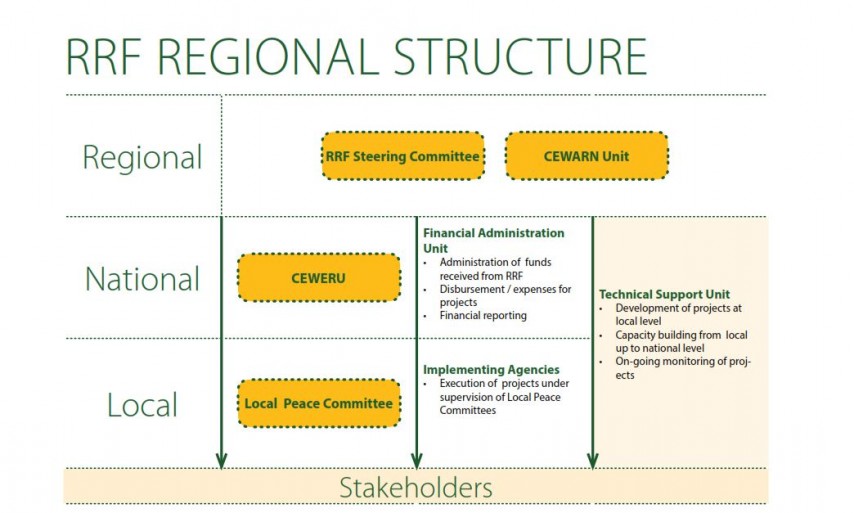
Areas of Operation From 2002 - 2012
Ordinarily, the life span of RRF projects will not exceed one year as these projects are intended to complement long-term development interventions of governments rather than supplanting them.
The RRF may be called up on to prevent, de-escalate or resolve violent conflicts. Its scope covers two main types of intervention
- Support to Conflict prevention, Management and resolution (CPMR) projects initiated at the local level. These include Peace dialogues; emergency support to communities affected by conflict; facilitating joint access to resources as well as technical studies and applied research.
- Capacity building for peace structures at local, sub-national and national levels.


